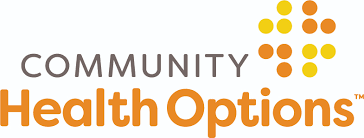Substance Abuse Treatment Programs
Crossroads offers a variety of substance abuse treatment programs for men and women in any stage of life.
Substance use disorders do not discriminate. They can affect men and women, young and old alike, and span diverse socioeconomic classes, ethnicities, and occupations. While there are some genetic factors that can affect addiction risk, environment also plays a key role. According to a 2014 study, approximately 21.5 million Americans who were age 12 or older had a substance use disorder. Around 4.5 million had a problem with only drugs, 14.4 million had a problem with only alcohol, and 2.6 million Americans had a problem with both.
These substance disorders can affect not only physical health, but mental health as well and lead to problems at home, work, school, and in social situations. They can put a strain on relationships, lead to risky behavior, and take a toll on overall well-being. Entering into a comprehensive addiction and behavioral health treatment program at Crossroads’ addiction rehab center helps our clients to get their lives back on track and develop the skills necessary for recovery.
What Are Substance Abuse Disorders?
 In 2013, the American Psychiatric Association (APA) redefined what it means to have a substance use disorder. Previously, the terms addiction and substance abuse disorder was commonly used to describe the misuse of drugs and alcohol. Now both of these conditions fall under the term substance use disorder according to the Diagnostic and Statistical Manual of Mental Disorders, Fifth Edition or DSM-5. Substance disorders are ranked as mild, moderate, and severe.
In 2013, the American Psychiatric Association (APA) redefined what it means to have a substance use disorder. Previously, the terms addiction and substance abuse disorder was commonly used to describe the misuse of drugs and alcohol. Now both of these conditions fall under the term substance use disorder according to the Diagnostic and Statistical Manual of Mental Disorders, Fifth Edition or DSM-5. Substance disorders are ranked as mild, moderate, and severe.
The DSM-5 diagnoses substance use disorders on “evidence of impaired control, social impairment, risky use, and pharmacological criteria” according to the Substance Abuse and Mental Health Services Administration (SAMHSA). These disorders occur when continued use of alcohol and/or drugs causes clinically and functionally significant impairment without substance abuse disorder treatment. Substance abuse may start as a way to feel good, to feel better, to do better, or out of curiosity or peer pressure according to the National Institute on Drug Abuse.
There is not a single factor that determines addiction risk. It is a combination of genetics and environment. While genetics account for 40% to 60% of addiction risk, an individual’s social influences, community, home environment, relationships, academic competence, and other factors also play a role. Both protective and risk factors exist in everyone’s lives and influence substance use.
What are the Different Types of Substance Abuse Disorders?
There are two main types of substance use disorders: alcoholism (or alcohol use disorder) and drug addiction. While some people use both drugs and alcohol, others are addicted to one or the other. Regardless, substance abuse treatment programs are vital in effectively overcoming addiction, living a healthier life, and reducing the risk of relapse.
Alcoholism
Alcoholism, or alcohol use disorders (AUD), affected an estimated 17 million adults in the United States in 2012. Alcohol can impair thinking and decision making, increase the risk of heart and liver disease, affect sleeping, and lead to poorer health. Not everyone who drinks alcohol develops alcoholism, but everyone is at risk.
Some people are still able to maintain a steady job and cover up the extent of their drinking, but that does not mean they do not have a problem. When someone has trouble controlling how much they drink, develops a tolerance to alcohol, experiences withdrawal when they stop drinking or continues to drink despite negative consequences, it can be a sign that they may be battling alcoholism.
Drug Addiction
Drug addiction or drug use disorder can span several different categories. It can include illegal drugs as well as prescription medications and can range from stimulants and hallucinogens to opiates and methamphetamines. Common drugs include cocaine, heroin, methamphetamines, benzodiazepines, steroids, and inhalants. Some of these drugs can be highly addictive and lead to substance use disorders in a short period of time. No one intends to become addicted, but drugs change how the brain is wired and how it functions. It interferes with the brain’s natural reward system and drives the craving for drugs.
Approximately one out of every five people affected by substance abuse have multiple substance disorders. They may be using more than one type of drug or combining drugs and alcohol. There are others with co-occurring disorders that include substance abuse and a mental health disorder such as depression, anxiety, or post-traumatic stress disorder (PTSD).
Get Help for Drug Addiction or Alcoholism at Crossroads
You do not have to try to overcome drug addiction or alcoholism on your own. In fact, it can be very difficult to do so. Crossroads offers substance abuse treatment programs at the Maine addiction rehab center. We use evidence-based approaches, holistic therapies and gender-responsive treatment. We address all aspects of substance use disorders, from residential treatment and intensive outpatient programs (IOP) to individual, group, couples and family counseling. We specifically design the treatment our clients receive to meet their individual needs and address the challenges that they face in recovery. Drug addiction and alcoholism can be overcome allowing our clients to live healthier lives and remember who they wanted to be.
If you or someone you love could benefit from substance abuse treatment programs for a substance use disorder, contact Crossroads today for more information.











